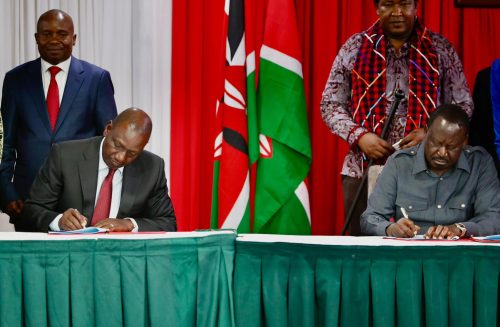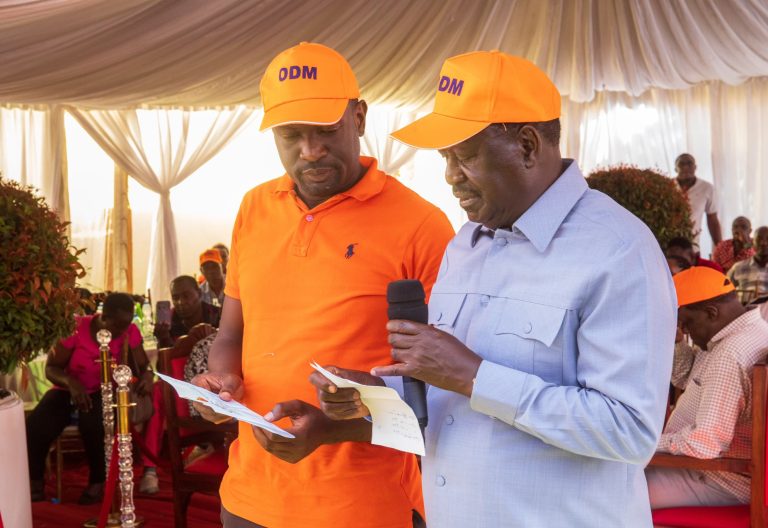ODM’s litmus test looms in crucial by-elections across 3 constituencies
By Martin Oduor, July 12, 2025After years of a debilitating leadership vacuum at the Independent Electoral and Boundaries Commission (IEBC), a fully constituted electoral body is finally in place, clearing the way for long-overdue by-elections in at least five constituencies that will put the Orange Democratic Movement (ODM) party’s influence to the test.
The absence of a functional IEBC had left thousands of Kenyans without direct parliamentary representation, but that chapter is now set to close.
The electoral body was mired in uncertainty since the contentious August 2022 presidential election.
The dramatic exit of four commissioners, famously known as the “Cherera Four” – Juliana Cherera, Francis Wandera, Irene Masit, and Justus Nyang’aya – who publicly disputed the presidential results announced by then-IEBC Chairman Wafula Chebukati, left a big leadership vacuum at the electoral body.
The retirement of Chebukati and two other commissioners, Boya Molu and Abdi Guliye, further deepened the leadership void at IEBC.
This institutional paralysis meant that even constitutionally mandated by-elections could not be held, leaving several constituencies unrepresented.
President William Ruto’s re-gazettement of the new IEBC chairperson, Erastus Edung Ethekon, and six commissioners on Thursday, July 10, 2025, following a High Court ruling that paved the way for their appointment, has finally broken the deadlock.

The new IEBC team is now cleared to commence work, and top of their agenda will be the scheduling of these delayed by-elections.
Beyond the logistical challenges, the upcoming by-elections carry significant political weight, particularly for ODM.
The five constituencies awaiting new Members of Parliament (MPs) are: Ugunja, Mbeere North, Kasipul, Banissa, and Magarini.
However, Ugunja, Kasipul, and Magarini are widely considered ODM strongholds, having been represented by ODM MPs.
The specific battle for these three seats will provide a sharp insight into ODM’s current standing amidst evolving political dynamics.
Ugunja, Siaya county
This seat fell vacant in July 2024 when its immediate former MP, James Opiyo Wandayi, resigned from Parliament to take up a significant Cabinet role as the Cabinet Secretary for Energy.
Wandayi was elected on an ODM ticket.
Kasipul, Homa Bay county

This ODM stronghold lost its representative due to the tragic death of its MP, Charles Ong’ondo Were, who was fatally shot on April 30, 2025.
Ong’ondo’s son, Boyd Were, is already positioning himself to succeed his father as the next Kasipul MP.
Ong’ondo Were was an ODM elected MP.
Magarini, Kilifi county
The prolonged vacancy in Magarini constituency stems from a legal battle.
The High Court first invalidated the August 9, 2022, Magarini parliamentary result on March 3, 2023, citing irregularities and illegalities.
This nullification was subsequently upheld by the Supreme Court on May 31, 2024, confirming both the High Court and the Court of Appeal rulings.
The immediate former MP for Magarini constituency was Harrison Garama Kombe, an ODM representative.
Acid test
The past few weeks have seen Kenya rocked by three waves of intense Gen Z-led protests, largely fueled by anger over economic hardship and police brutality.
While initially independent, these protests have put immense pressure on the political establishment, including traditional opposition parties.
ODM’s decision to align with the government has placed the party in a precarious position, amid concerns that the move may have alienated sections of its support base.
On March 7, 2025, ODM and the ruling UDA signed a 10-point Memorandum of Understanding at the Kenyatta International Convention Centre (KICC), with the aim of healing political divisions, addressing youth unemployment and the high cost of living, enhancing governance, strengthening devolution, upholding constitutional rights, auditing public debt, and tackling corruption, among other issues.

However, the lingering question is whether ODM has gained any tangible benefits from its entente with the government.
The question among many now is whether this strategic shift by ODM will be embraced or rejected by the electorate in its traditional heartlands.
Will voters in Ugunja, Kasipul, and Magarini reaffirm their loyalty to a party navigating a complex political landscape, or will the discontent visible in the recent Gen Z-led protests translate into a challenge to the established order, even within perceived strongholds?
The upcoming by-elections will not just fill vacant seats; they will serve as a crucial barometer of public sentiment and a defining moment for ODM’s enduring influence in a rapidly changing Kenya.
